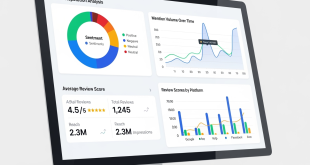Managing software licenses is one of the necessary evils of running an IT department. Tame the complexities of license management by using the right resources and understanding these seven licensing concerns.

1. Tracking License Usage
Especially in a large IT environment, license management can be a herculean task that easily exceeds the capabilities of generic spreadsheets or database programs. That’s why it’s critical to have a purpose-made tool for managing software licenses. Tracking and administering your licenses is an ongoing process.
No matter how well you planned your purchases, the evolution of your environment will necessitate licensing changes. For example, licenses from one purchase order might need to be recombined with other orders to support a different project. Replacement hardware with different technical specs than your obsolete equipment could possibly require different licensing.
2. Taking Charge of Chargeback
If you have a chargeback system in place within your organization, you’ll need to track which licenses belong to which department. Otherwise, you might not be able to prove that you’ve allocated licenses properly. In that case, you could risk losing in-house reimbursement for the licensing fees.
3. Changing License Names & Coverage
Over time, the same license type might get renamed by the vendor. Conversely, the vendor might continue using the same name for a license but change some of its covered features. Regularly confer with the vendor to be sure that you fully understand what each license covers in terms of features.
4. Converting Legacy Licenses
In the same vein, you might own licenses that are later phased out by the vendor. You’ll need to track all the licenses you own, even if they’re not currently in use. The vendor should convert phased-out licenses into licenses for current products, so you don’t lose your investment. Sometimes, you can haggle with the vendor to get a conversion deal that will serve your IT needs better.
5. Licensing Different OS Platforms & Hardware
Some software requires different licensing for Windows versus Linux/UNIX platforms. The same can be true for midrange versus mainframe systems.
You’ll also need to understand processors and cores, since some vendors classify licenses by these attributes. Sometimes, different standards are used for virtual machines than for physical ones.
6. Licensing for Services & Support
Some companies don’t make you pay for software upgrades directly. Rather, they ask you to pay for a support license that corresponds to a particular software.
In order to get technical support from the vendor, you might be asked to buy support licenses for each new iteration of a software product. Some vendors also license general technical support services, to help you manage your IT environment as a whole.
7. Licensing in the Cloud
License management at the enterprise level can be complex. But even managing licenses for workstation productivity software has its own challenges. Workstation software licensing was traditionally divided into two main types: seat- or site-based licensing.
Now that much of our computing is virtual, licensing has also moved to the cloud. It’s worth familiarizing yourself with the new cloud-based licensing models, such as pay-per-instance or subscription services.
If you’re managing software licenses for a geographically distributed workforce, you’ll need to work with the vendor to make sure you are meeting all of the legal requirements. For instance, due to copyright restrictions, some vendors may not license their software for use in certain countries. Other vendors may not license software installation on multiple mobile devices by a single user.
Managing software licenses can be a tricky business. The trick to successful license management is equipping your business with the right tools: close communication with software vendors and a dynamic platform for tracking your licenses.
 Entrepreneur Resources Your source for small business information
Entrepreneur Resources Your source for small business information




